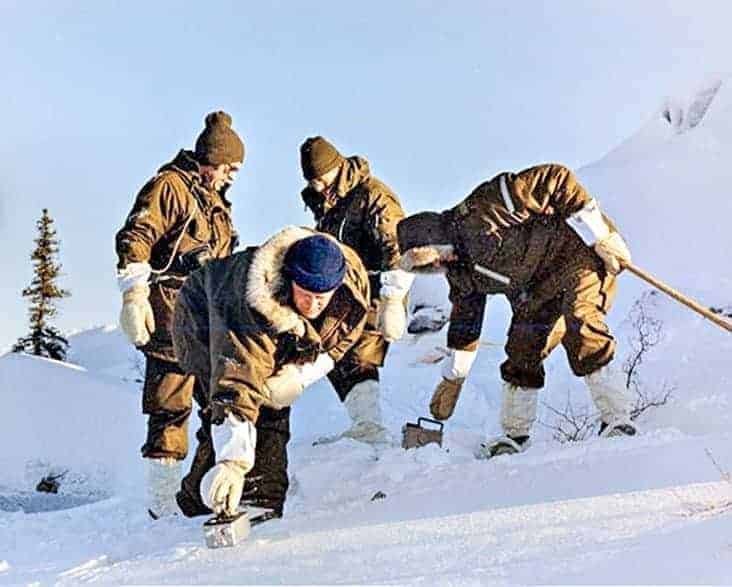On the morning of January 24, 1978, a ball of fire was seen ripping through the early morning sky above Northern Canada.
The fireball was a Soviet Union reconnaissance satellite, called Cosmos 954, that had malfunctioned and was hurtling towards Earth.

Cosmos 954 was meant to track NATO-operated ocean vessels and submarines, according to Radio Canada International.
The fiery descent was particularly dangerous because the satellite was powered by a 50-kg core of radioactive Uranium.
Cosmos 954 broke apart as it plummeted through the atmosphere and radioactive fragments were sprayed across the Northwest Territories, today's Nunavut, Alberta and Saskatchewan.
An 80,000 square-kilometre swath of land east of Hay River had received a "light dusting of highly radioactive material," states a Prince of Wales Northern Heritage Centre timeline.
Ellen Powers, a master's student in the University of Toronto's geography department, is researching how the satellite crash affected people living in the area of impact.
Powers was was in the South Slave region last month documenting people's stories about the breakup of Cosmos 954, and about Operation Morning Light, the joint Canada-U.S. military effort to recover the radioactive debris.
Pieces from the reactor core were miniscule, the size of pepper grains, said Powers, and they were scattered over a gigantic subarctic area, from the South Slave region to Baker Lake.
According to the Yellowknife museum's timeline, the largest radioactive fragment picked up was just a few centimetres in length but so radioactive that it would have killed whoever was exposed to it.
Residents of the area of the satellite crash "just don't know a lot about it," said Powers.
"People do have questions and concerns."
In her study of archival materials and government reports, Powers noticed that the voices of the people most affected by the event, particularly those belonging to Northern Indigenous people, had been left out of the conversation.
To fill in the blanks, Powers travelled from Toronto to the Northwest Territories to hear directly from residents of Fort Resolution and Lutsel K'e – two of the most affected communities – who have memories of the Cosmos 954 cleanup.
Rosy Bjornson of Deninu Kue First Nation was a year old when the satellite came down. She said the community still wonders why the people living there were not told that it was unsafe to go outside when officials came in with hazmat suits.
It has been more than 40 years since the satellite came down, and yet in that time there has been little research on the effects to human health and the environment, said Powers.
"A lot of people have raised concerns about rising cancer rates," she added.
"Whether that's connected to the satellite or mines in the region, people just aren't sure."
Residents told Powers they felt they were not informed at the time of the potential dangers of radiation.
Bjornson said "the general sense is... if that's what's causing a lot of people to have cancer, and why it isn't talked about more."
She said community members were happy that someone was finally coming in to talk to them and listen to their concerns.
A primary worry is related to on-the-land activities, said Powers. Community members are concerned they may have unknowingly encountered radioactive material while harvesting, eating game, or gathering plants.
Some of the radioactive flecks are "practically invisible," she said, and cannot be detected without a Geiger counter, an instrument that senses and measures radiation.
"They still don't know if they should still be concerned about it, if there is still a risk," she said.
Bjornson said the Deninu Kue would appreciate an apology from the Russian and Canadian governments for how the satellite crash and cleanup was handled.
For Powers, field research in the NWT is a chance to "complicate the narrative" of Cosmos 954. It's also an opportunity to investigate concerns that have been largely ignored about the potential health and environmental impacts of the satellite crash.
"It's really exciting to hear people's stories and to get people's perspectives," said Powers, for whom this visit to the territory was a first.
The story of Cosmos 954 has not faded from Northern memory, she said.
"Even just stopping through Yellowknife… someone at the B'n'B said, 'Oh I remember about about Cosmos!'" she said.
"It's really nice to hear people's different stories."